

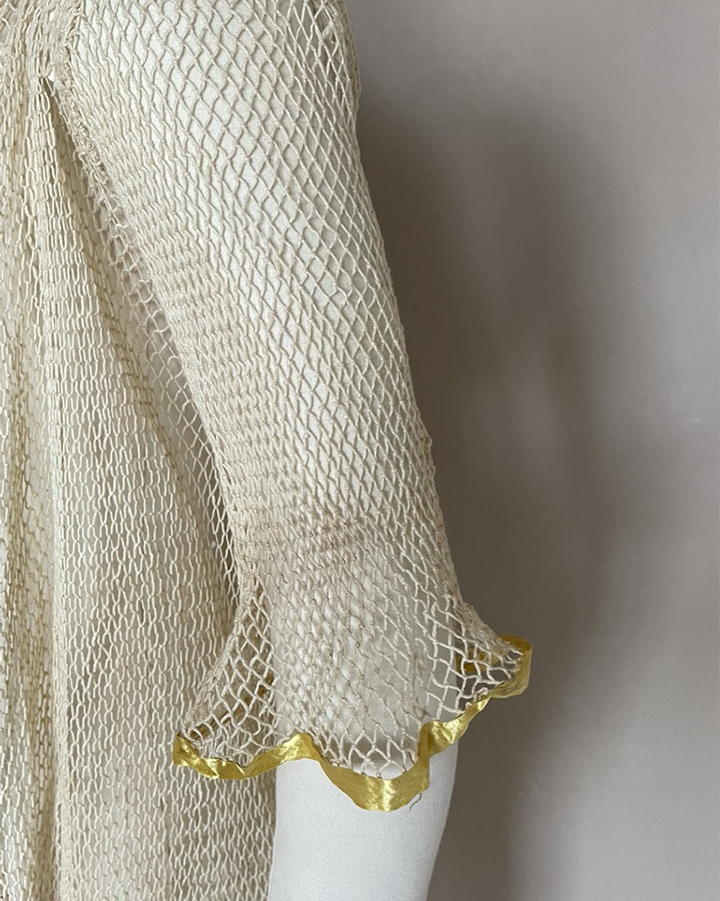

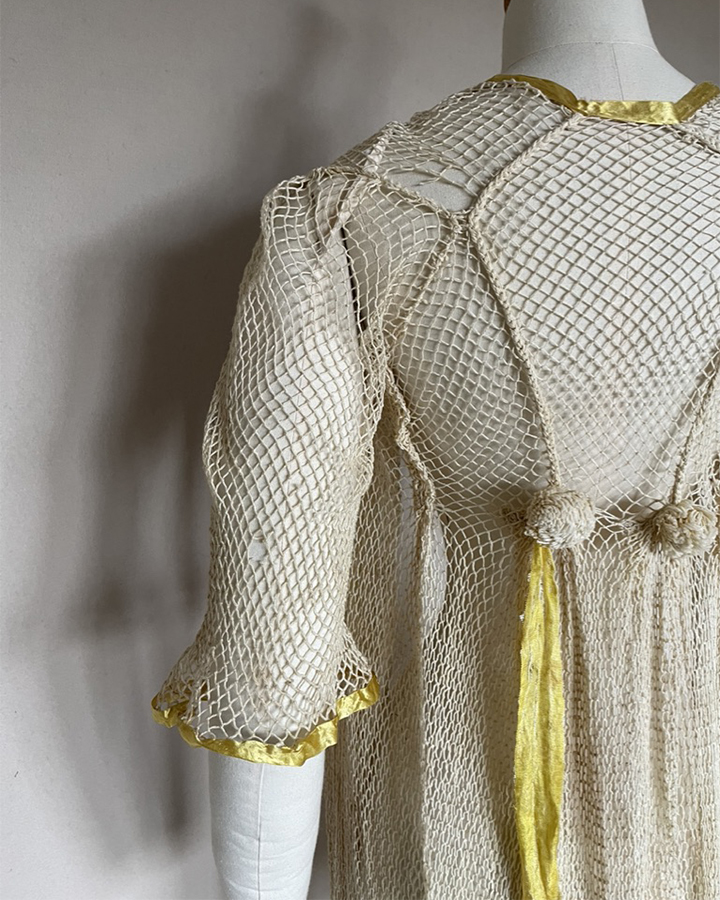
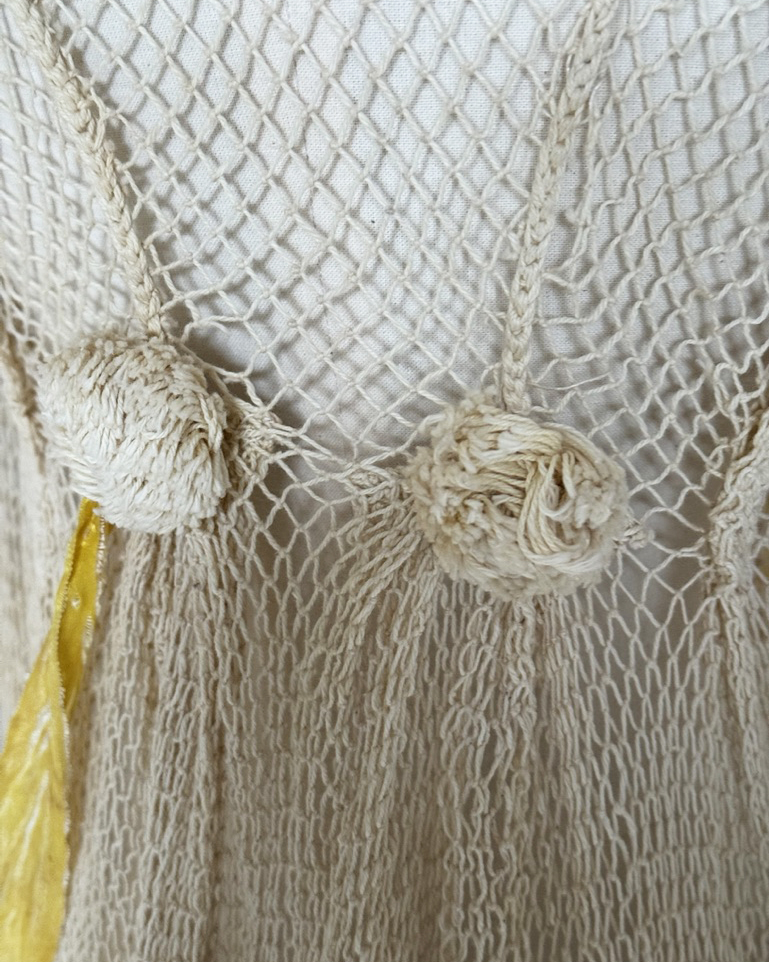

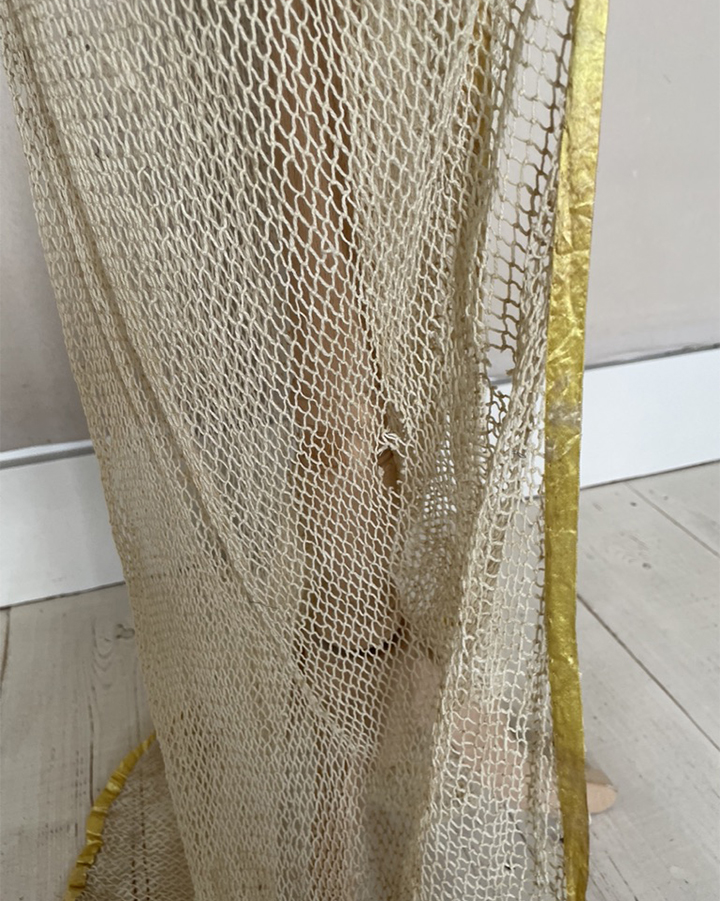

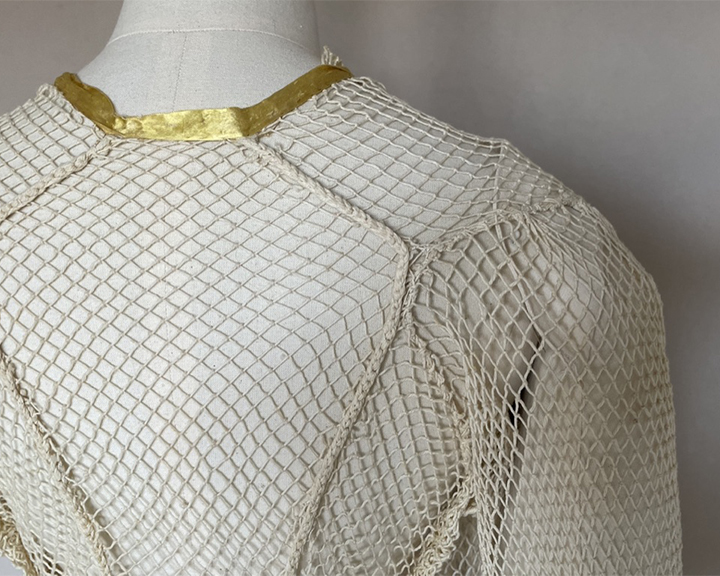
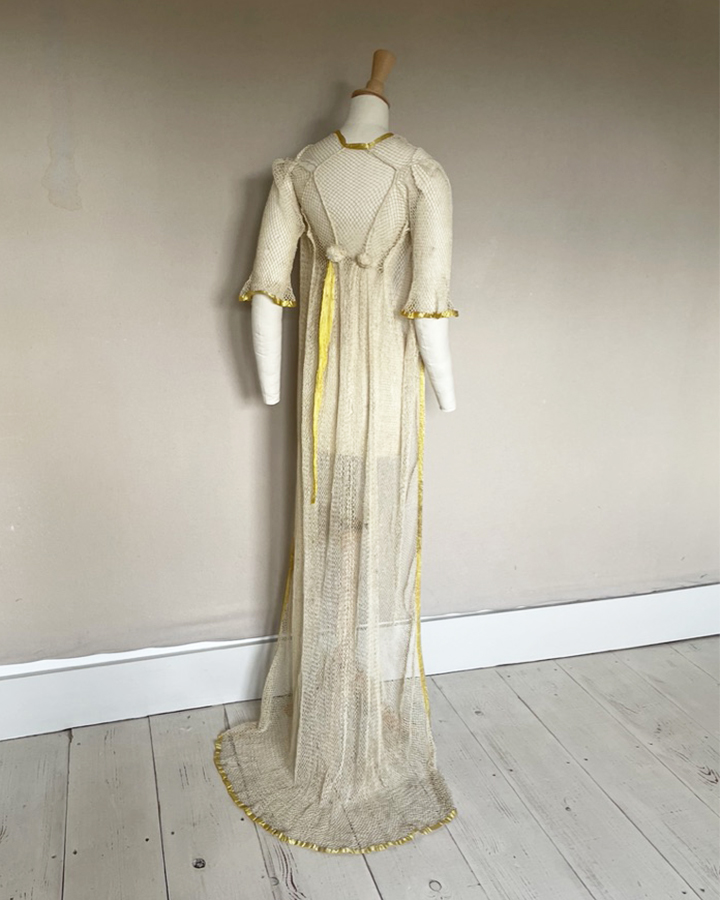

The high waist yellow ribbons of this pelisse or overdress would have been tied at the front, over a simple dress.
In Alden O'Brien's exhibition catalogue* she states that in English fashion plates dating between 1798 and 1802 netted dresses can be seen, but they are not evident in French plates. They were worn with an opaque underdress. O'Brien tells us that in some English portraits of that period women are seen with dresses which have netted sleeves, probably made by the wearer*. Netting of fishermen's nets was the same technique. It would have been labourius and time consuming to produce, but for a lady who liked to be productive whilst talking to friends it would have been a good use of her time. Few garments were made, but plenty of reticules and mittens were produced.(See other netted entries on the site). Netting involves manipulating a continuous knotted strand of thread with a long blunt needle or shuttle and a sizing card.
Mrs Delaney is recorded as remarking that she found her friend the Duchess of Portland busy making a cherry net of 100 meshes per row.** In the early 19th century little silk netted purses were hugely popular, some professionally but many by leisured lady amateurs. The making of a netted shawl, dress or pelisse would have been relatively quick to produce using a netting shuttle and needle set.
Only three other netted garments are known, three dresses in America. I do not know of a museum in the UK which has one. The back of mine is very similar to the Philadelphia overdress.
From the collection of the late Mrs June Jeffreys (1928 – 2016) who married George William Eyre Jeffreys (1931 - 2019) in 1960. The house Newhouse, Redlynch, near Salisbury, Wiltshire, had been in the family for 400 years and many of the dress collection was inherited through Mr Jeffrey’s family.
The trained pelisse with off white small diamond cotton mesh edged in bright citron yellow silk ribbon to the open front, the elbow length sleeves and the hem, the back with curving corded seams from the shoulder back to the high waist and from the curved seam to underarm, two cotton pompoms to centre back, a yellow ribbon, presumably the tie to the front, from one of them (one missing).
Back shoulder to trained hem 65 in;1.64 m
Diamond mesh 1/4 in; 50 cm. Yellow ribbon tie 1 in; 2.5 cm wide. Yellow ribbon edging ribbon 1/2 in; 1 cm.
Good. There is one of the front yellow tie ribbons missing. The other is damaged, as you should be able to see from the photographs. There is a small light brown mark to the yellow silk ribbon midway down the front right hand side., 3 in; 7 cm long full width of ribbon.
There are about 12 small holes where the cotton has broken and then three much larger. To lower curved front section has a 1 1/2 x 2 in; 4 x 5 cm hole to the right hand back shoulder, as you look at the coat. 7 x 2 cm wide area of damage to centre back. Ask for photos or video.
*For a smilar dress: An Agreeable Tyrant. Fashion after the Revolution. Alden O'Brien p 78/9. agreeabletyrant.dar.org/gallery/1800-1810/cotton-netted-overdress
**philamuseum.org/collection/object/76573. A portrait of Frances Cadwalader Montague, Lady Erskine of 1802 by American portrait painter Gilbert Charles Stuart,
** Collecting Georgian & Victorian Crafts June Field p 141.
www.npg.org.uk/collections/search/portrait/mw279573/Afternoon-Dress-for-June-1800
Lady's Monthly Museum (London) Fashions for June 1800, a netted dress is illustrated. Published in May 1800
All images and text © meg-andrews.com 2021